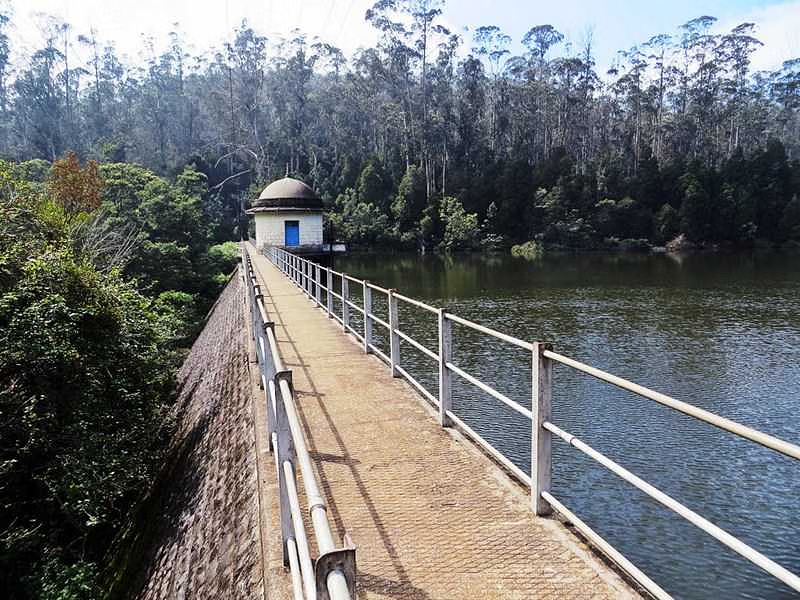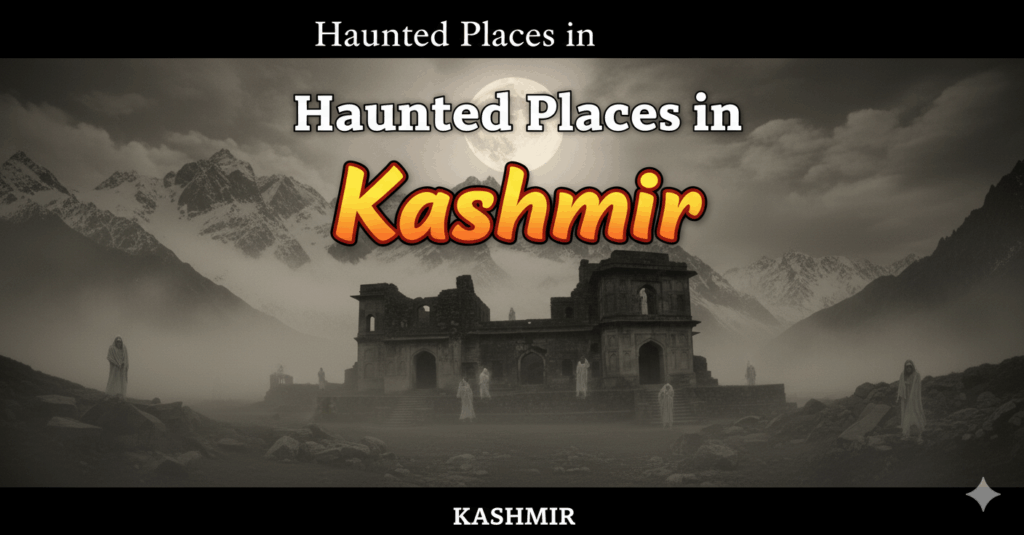Located on the sacred banks of the Bagmati River in Kathmandu, Pashupatinath Temple stands as one of the holiest Shiva temples in the world and a UNESCO World Heritage Site. With thousands of devotees visiting daily, understanding the best time to visit Pashupatinath Temple becomes crucial for experiencing meaningful darshan without overwhelming crowds. Poor timing can result in long queues, uncomfortable weather, and rushed spiritual experiences that diminish the sanctity of your pilgrimage.
The temple’s popularity stems from its 1,400-year history and significance as Lord Pashupatinath’s sacred abode, attracting pilgrims from across the globe. However, this spiritual magnetism creates practical challenges including crowd management, weather variations, and festival rushes that require strategic planning. Smart timing ensures your visit focuses on devotion and cultural immersion rather than battling logistics and uncomfortable conditions.
Table of Contents
Quick Reference Guide: Optimal Times for Pashupatinath Temple Visit
| Category | Optimal Choice | Crowd Level | Weather Condition | Best For |
|---|---|---|---|---|
| Best Season | Autumn (Oct-Nov) | Moderate-High | Pleasant & Clear | First-time visitors |
| Best Month | February, March | Low-Moderate | Cool & Comfortable | Balanced experience |
| Best Festival | Maha Shivaratri | Very High | Cool (Feb/Mar) | Spiritual seekers |
| Avoid Period | Monsoon peak (July) | Low | Heavy rain | Weather-sensitive travelers |
| Ideal Weather | October-December | High | Perfect climate | Photography enthusiasts |
Understanding these patterns helps you choose the perfect combination of weather, crowd levels, and cultural experiences based on your priorities and preferences.
Best Seasons to Visit Pashupatinath Temple
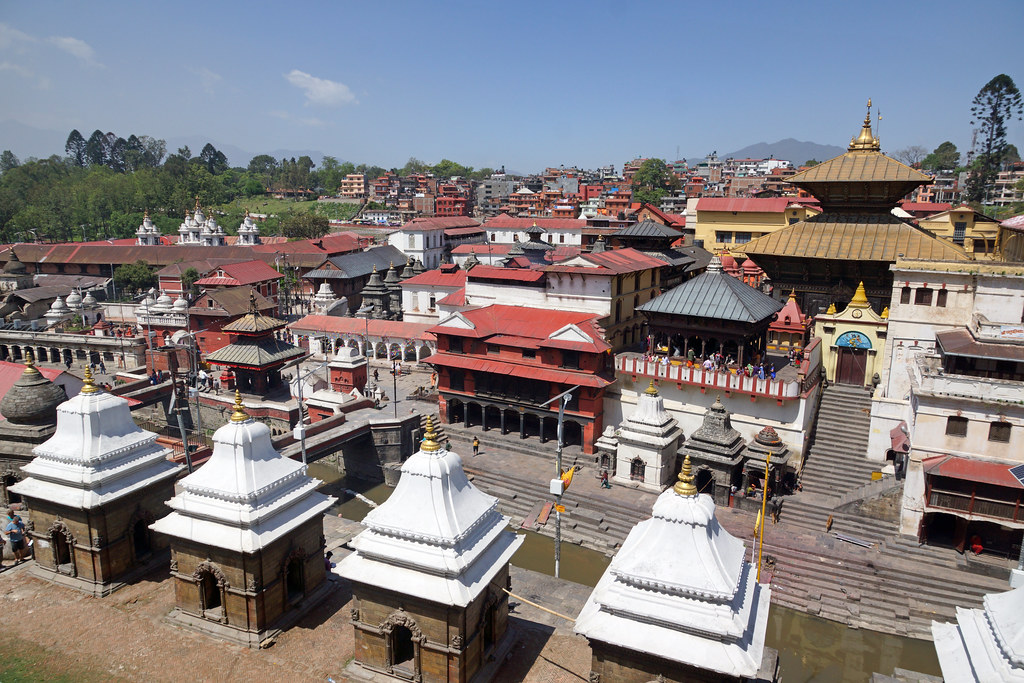
Seasonal selection dramatically influences your temple experience, affecting everything from weather comfort to cultural authenticity. Each season offers unique advantages and challenges that cater to different types of pilgrims and travelers. The key lies in understanding how weather patterns interact with local festivals and tourist seasons to create optimal visiting windows.
Autumn (October-November): Peak Season Excellence
Autumn represents the best time to visit Pashupatinath Temple for most international visitors seeking ideal conditions.
October:
- Temperature: 15°C to 24°C (perfect for exploration)
- Weather: Clear skies with excellent mountain visibility
- Crowd Level: High due to ideal climate
- Festivals: Dashain celebration creates vibrant atmosphere
- Pros: Crystal clear Himalayan views, comfortable temple walking
- Cons: Higher accommodation costs, advance booking essential
November:
- Temperature: 8°C to 22°C (crisp and refreshing)
- Weather: Minimal rainfall, stable conditions
- Crowd Level: Moderate to high (post-festival calm)
- Festivals: Tihar (Festival of Lights) adds cultural richness
- Pros: Excellent photography conditions, pleasant climate
- Cons: Early morning and evening chill requires warm clothing
Winter (December-February): Spiritual Intensity
Winter months offer profound spiritual experiences despite cooler temperatures, making it ideal for serious devotees.
December-January:
- Temperature: 2°C to 17°C (coldest period)
- Weather: Clear days with occasional morning fog
- Crowd Level: Lower international tourists, more local devotees
- Festivals: Limited major celebrations
- Pros: Peaceful temple atmosphere, affordable accommodation
- Cons: Cold weather challenges, shorter daylight hours
February:
- Temperature: 4°C to 19°C (gradually warming)
- Weather: Clear, stable conditions
- Crowd Level: Moderate increase leading to Maha Shivaratri
- Festivals: Maha Shivaratri preparation period
- Pros: Pre-festival spiritual energy, comfortable exploration weather
- Cons: Increasing crowds as festival approaches
Spring (March-May): Comfortable Exploration
Spring provides the perfect balance of weather comfort and manageable crowds for detailed temple exploration.
March:
- Temperature: 8°C to 23°C (ideal hiking weather)
- Weather: Pleasant with minimal precipitation
- Crowd Level: Moderate (post-Shivaratri period)
- Festivals: Holi celebration adds color and joy
- Pros: Comfortable temple complex walking, blooming surroundings
- Cons: Dust levels increase, occasional afternoon heat
April-May:
- Temperature: 12°C to 28°C (warming trend)
- Weather: Clear mornings, possible afternoon clouds
- Crowd Level: Moderate with tourist season beginning
- Festivals: Various local celebrations throughout
- Pros: Extended daylight hours, excellent for photography
- Cons: Pre-monsoon heat buildup, occasional dust storms
Monsoon (June-September): Authentic Local Experience
Monsoon season offers the most authentic local experience with minimal tourist crowds despite weather challenges.
June-August:
- Temperature: 20°C to 27°C (cooler due to rains)
- Weather: Heavy rainfall, high humidity
- Crowd Level: Very low international visitors
- Festivals: Shravan month observances, Teej celebrations
- Pros: Lush green surroundings, authentic local atmosphere
- Cons: Travel disruptions, wet temple grounds, slippery steps
September:
- Temperature: 19°C to 27°C (post-monsoon freshness)
- Weather: Decreasing rainfall, clearing skies
- Crowd Level: Low to moderate (recovery period)
- Festivals: Ganesh Chaturthi, early Dashain preparations
- Pros: Clean air, reduced dust, moderate temperatures
- Cons: Occasional late monsoon showers, muddy pathways
Pashupatinath Temple Aarti Timings and Daily Schedule
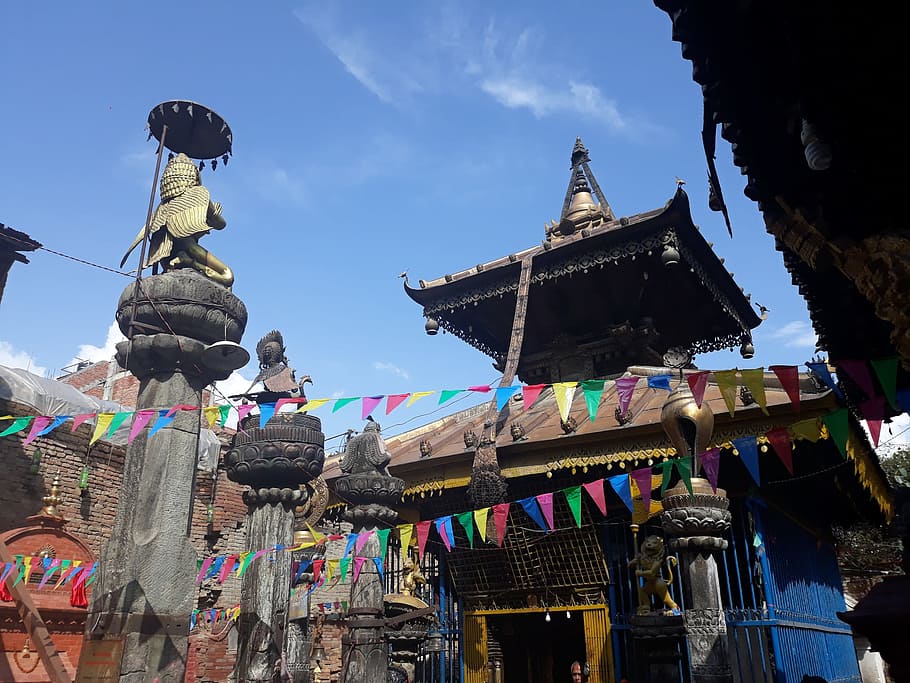
Understanding Pashupatinath temple aarti timings helps you plan meaningful participation in the temple’s most sacred rituals. The temple follows ancient traditions with specific ceremonies throughout the day, each offering unique spiritual experiences. These timings remain consistent year-round, though special occasions may feature extended hours or additional ceremonies.
Daily Aarti Schedule
Regular ceremony timings provide structure for planning meaningful participation in temple rituals.
Morning Aarti (Bhor Aarti):
- Timing: 6:00 AM – 7:00 AM
- Atmosphere: Serene, fewer crowds, cool morning air
- Best for: Peaceful meditation, photography with soft morning light
- Participation: Open to all visitors, arrive 30 minutes early
Evening Aarti (Sandhya Aarti):
- Timing: 6:00 PM – 7:00 PM
- Atmosphere: Mystical with hundreds of oil lamps, Vedic chanting
- Best for: First-time visitors, cultural immersion, spiritual experience
- Participation: Most popular ceremony, arrive 45 minutes early
Special Occasion Aartis:
- Maha Shivaratri: Continuous night-long ceremonies
- Teej Festival: Special women-focused rituals
- Full Moon Days: Extended evening ceremonies with additional prayers
Complete Daily Temple Schedule
Understanding the full day’s activities helps you plan arrival times and activity participation effectively.
| Time | Activity | Description | Visitor Access |
|---|---|---|---|
| 4:00 AM | Temple Opens | West gate opens for early devotees | Open access |
| 4:30 AM | Pre-dawn Preparations | Priest preparations, temple cleaning | Limited access |
| 6:00 AM | Morning Aarti | Main ceremony with prayers and offerings | Full participation |
| 8:00 AM | General Darshan | Regular worship period begins | Unrestricted access |
| 12:00 PM | Midday Break | Temple activities pause for lunch | Limited ceremonies |
| 2:00 PM | Afternoon Prayers | Resumed worship activities | Open to visitors |
| 6:00 PM | Evening Aarti | Main evening ceremony with lights | Peak participation |
| 8:00 PM | Final Prayers | Closing ceremonies begin | Limited access |
| 9:00 PM | Temple Closes | Gates close for the night | No access |
For detailed information about special ceremonies and festival timings, visit the official Nepal Tourism Board page at https://ntb.gov.np/pashupatinath.
How to Reach Pashupatinath Temple
Understanding transportation options helps you arrive during optimal visiting hours and seasons. Kathmandu’s location and connectivity make Pashupatinath accessible from major international destinations, though timing your arrival with ideal temple visiting periods requires careful planning. Multiple transportation modes offer flexibility based on your budget, time constraints, and comfort preferences.
Nearest Airport to Pashupatinath Temple
Tribhuvan International Airport (TIA) serves as the nearest airport to Pashupatinath temple, offering excellent connectivity for international pilgrims.
Distance and Travel Details:
- Distance: 6 kilometers from temple complex
- Travel Time: 20-30 minutes depending on traffic
- Cost Range: $3-8 USD for taxi services
- Best Arrival Times: Early morning (6:00-8:00 AM) or late evening (8:00-10:00 PM) to avoid traffic
Transportation from Airport:
- Prepaid Taxi: Fixed rates available at airport counter
- Hotel Transfers: Most accommodations offer pickup services
- Local Bus: Economical option with multiple stops
- Ride-sharing: Available through local apps like Pathao
International Connectivity:
- Direct flights from major Indian cities (Delhi, Mumbai, Kolkata)
- Regional connections through Bangkok, Doha, Dubai
- Charter flights during major festivals like Maha Shivaratri
- Helicopter services for premium access during peak seasons
Road Transportation Options
Multiple overland routes and local transport choices provide flexibility for reaching the temple complex.
From Indian Border Points:
- Sunauli-Bhairahawa: 300 km to Kathmandu (6-8 hours)
- Raxaul-Birgunj: 130 km to Kathmandu (4-5 hours)
- Kakarvitta-Panitanki: 550 km to Kathmandu (10-12 hours)
Local Transportation in Kathmandu:
- Taxi Services: Most convenient for temple visits with waiting options
- Local Buses: Routes 1, 2, and 9 connect to temple area
- Motorcycle/Scooter Rental: Popular for flexible temple hopping
- Walking: Possible from Boudhanath Stupa area (45 minutes)
Pashupatinath Temple Tour Planning

Effective Pashupatinath temple tour planning ensures comprehensive exploration while maximizing your time during optimal visiting conditions. The temple complex spans significant area with multiple shrines, cultural sites, and religious activities that require strategic scheduling. Proper planning helps you experience both spiritual elements and cultural richness without feeling rushed or missing important ceremonies. Many pilgrims combine their Nepal visit with other Himalayan spiritual destinations, similar to comprehensive Uttarakhand pilgrimage tours that offer multi-temple experiences in sacred mountain regions.
Recommended Visit Duration
Choosing the right visit length ensures you experience the temple’s spiritual essence without feeling rushed or overwhelmed.
Quick Visit (2-3 hours):
- Main temple darshan and primary shrines
- One aarti ceremony participation
- Basic photography and cultural observation
- Suitable for transit visitors or time-constrained pilgrims
Half-Day Experience (4-6 hours):
- Comprehensive temple complex exploration
- Both morning and evening aarti participation
- Cultural interactions and local guide engagement
- Nearby Boudhanath Stupa combination visit
Full-Day Immersion (8+ hours):
- Complete spiritual and cultural experience
- Multiple aarti ceremony participation
- Detailed photography and cultural documentation
- Extended meditation and spiritual practices
- Integration with other Kathmandu valley sites
Optimal Daily Schedule
Strategic timing throughout the day maximizes your spiritual experience while avoiding peak crowd periods.
Early Morning Strategy (Recommended):
- 5:30 AM: Arrive at temple complex
- 6:00-7:00 AM: Participate in morning aarti
- 7:00-10:00 AM: Explore temple complex during peaceful hours
- 10:00 AM-12:00 PM: Visit nearby attractions or rest
- 5:30-7:00 PM: Return for evening aarti
- 7:00-8:00 PM: Final temple exploration and departure
Festival Day Planning:
- 3:00 AM: Arrive early during major festivals
- Pre-dawn: Secure good viewing positions
- Dawn to noon: Participate in extended ceremonies
- Afternoon: Rest and preparation for evening events
- Evening: Special festival aarti and celebrations
- Late evening: Traditional cultural programs
Combining with Other Attractions
Sacred Circuit (Same Day):
- Pashupatinath Temple: Morning aarti and exploration
- Boudhanath Stupa: Afternoon circumambulation and Buddhist prayers
- Swayambhunath Temple: Sunset views and evening prayers
- Transport: Taxi or motorcycle for efficient movement
Cultural Heritage Tour (Multi-day):
- Day 1: Pashupatinath and Boudhanath
- Day 2: Kathmandu Durbar Square and Swayambhunath
- Day 3: Patan Durbar Square and Bhaktapur
- Day 4: Nearby hill stations or extended temple visits
For comprehensive tour planning and cultural context, refer to the official tourism information at https://ntb.gov.np/pashupatinath.
Pashupatinath Temple Weather Guide
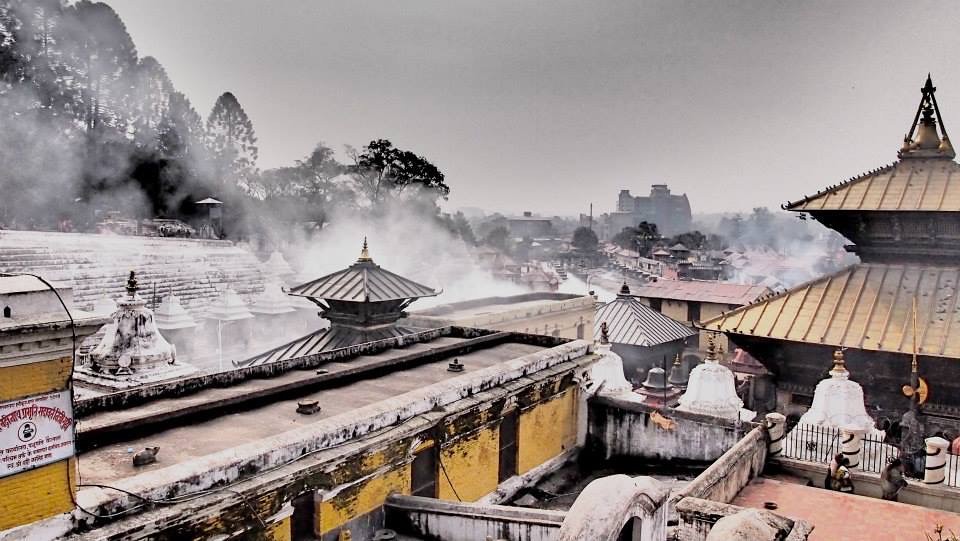
Pashupatinath temple weather significantly influences your visiting experience, affecting everything from comfort levels to photography opportunities. Kathmandu’s subtropical highland climate creates distinct seasonal patterns that impact temple accessibility, crowd behavior, and ceremonial activities. Understanding monthly weather variations helps you pack appropriately and set realistic expectations for your pilgrimage experience.
Month-by-Month Weather Analysis
Understanding monthly weather patterns helps you pack appropriately and set realistic expectations for your visit.
| Month | Temperature Range | Rainfall | Visibility | Crowd Impact | Recommendation |
|---|---|---|---|---|---|
| January | 2°C – 17°C | Very Low | Excellent | Low-Moderate | Good for peaceful visits |
| February | 4°C – 19°C | Low | Excellent | Moderate | Ideal balance |
| March | 8°C – 23°C | Low | Good | Moderate | Perfect for exploration |
| April | 12°C – 28°C | Moderate | Good | High | Pre-monsoon optimal |
| May | 16°C – 29°C | Moderate | Fair | High | Warm but manageable |
| June | 19°C – 29°C | High | Poor | Low | Start of challenges |
| July | 20°C – 27°C | Very High | Very Poor | Very Low | Wettest period |
| August | 20°C – 27°C | High | Poor | Low | Continued rains |
| September | 19°C – 27°C | Moderate | Improving | Low-Moderate | Recovery period |
| October | 14°C – 25°C | Low | Excellent | High | Peak season |
| November | 8°C – 22°C | Very Low | Excellent | High | Festival season |
| December | 4°C – 18°C | Very Low | Excellent | Moderate | Clear and cool |
Weather-Based Clothing Recommendations
Appropriate clothing choices ensure comfort and respect for temple customs across different seasons.
Winter Months (December-February):
- Layers: Essential for temperature variations throughout the day
- Morning/Evening: Heavy jacket, warm scarf, gloves
- Daytime: Light sweater or hoodie with removable layers
- Footwear: Closed shoes with good grip for potentially icy temple steps
- Accessories: Warm hat, sunglasses for bright mountain reflection
Monsoon Season (June-September):
- Rain Gear: Waterproof jacket, umbrella, plastic bags for electronics
- Footwear: Non-slip shoes with good drainage, avoid leather
- Clothing: Quick-dry synthetic materials, avoid cotton
- Protection: Waterproof camera covers, plastic document holders
- Backup: Extra clothing in case of heavy soaking
Best Weather Windows for Specific Activities
Different weather conditions favor specific types of temple experiences and activities throughout the year.
Photography Enthusiasts:
- October-December: Crystal clear mountain backdrops
- March-April: Good lighting with minimal haze
- Early morning: Best light quality regardless of season
- Avoid: Monsoon months for outdoor photography
Spiritual Seekers:
- February-March: Comfortable meditation weather
- Winter months: Crisp air enhances spiritual focus
- Maha Shivaratri period: Special spiritual energy despite cold
- Early morning: Peaceful atmosphere regardless of season
For spiritual seekers interested in South Indian temple experiences, Tirupati pilgrimage packages provide well-timed visits to Lord Venkateswara’s sacred abode with similar attention to optimal visiting conditions and crowd management.
Tips to Avoid Crowds and Enhance Your Experience
Strategic planning ensures you experience the best time to visit Pashupatinath Temple regardless of your chosen season. Smart timing combines weather considerations with crowd patterns, festival schedules, and personal preferences to create optimal visiting conditions. These proven strategies help pilgrims maximize spiritual benefits while minimizing logistical challenges and uncomfortable situations.
Crowd Avoidance Strategies
Smart timing choices can dramatically reduce wait times and enhance the peaceful atmosphere of your temple experience.
Optimal Timing Choices:
- Weekdays: Tuesday through Thursday show significantly lower crowds
- Early Morning: Arrive by 5:30 AM for peaceful temple atmosphere
- Off-Peak Months: February, June, and September offer fewer tourists
- Avoid Festival Peaks: Skip immediate festival days unless seeking cultural immersion
Alternative Experience Options:
- Meditation Focus: Choose winter months for contemplative atmosphere
- Photography Priority: October-November for clear visibility
- Cultural Learning: Monsoon season for authentic local interactions
- Budget Consideration: Off-season visits offer better accommodation rates
Advanced Planning Recommendations
Thorough preparation ensures smooth temple visits and helps avoid common pitfalls that can disrupt your spiritual journey.
Booking and Reservations:
- Accommodation: Book 2-3 months ahead for peak seasons
- Transportation: Confirm flight schedules during festival periods
- Local Guides: Arrange knowledgeable guides for cultural context
- Photography Permits: Obtain necessary permissions for professional photography
Documentation and Preparation:
- Weather Gear: Pack according to seasonal requirements
- Cultural Sensitivity: Research appropriate temple behavior and dress
- Health Precautions: Carry altitude sickness medication if sensitive
- Emergency Contacts: Note local medical facilities and embassy information
Technology Integration:
- Weather Apps: Monitor real-time conditions for Kathmandu
- Translation Apps: Helpful for local interactions
- Offline Maps: Download for navigation without internet
- Currency Apps: Track exchange rates for budget management
Cultural Enhancement Opportunities
Engaging with local culture and traditions adds depth to your temple visit beyond the basic darshan experience.
Learning Experiences:
- Local Workshops: Participate in traditional art classes
- Language Basics: Learn basic Nepali greetings and temple terminology
- Cultural Guides: Engage knowledgeable local guides for deeper understanding
- Photography Courses: Improve skills for capturing temple architecture
Community Interaction:
- Local Devotees: Respectful interaction during ceremonies
- Cultural Centers: Visit nearby institutions for broader context
- Traditional Crafts: Explore local artisan workshops
- Meditation Groups: Join organized spiritual practices if available
For devotees seeking similar sacred mountain experiences, consider exploring Vaishno Devi pilgrimage packages which offer comparable Himalayan spiritual journeys with well-organized temple visits and cultural immersion opportunities.
For comprehensive cultural information and official guidelines, visit the Nepal Tourism Board’s detailed page at https://ntb.gov.np/pashupatinath which provides current updates on temple activities, festival schedules, and visitor requirements.
Conclusion
The best time to visit Pashupatinath Temple depends on balancing weather comfort, crowd preferences, and spiritual objectives. For most visitors, October through March offers the optimal combination of pleasant climate, manageable crowds, and excellent temple accessibility. February emerges as particularly ideal for those seeking balance between weather comfort and authentic cultural experiences without overwhelming tourist numbers. Essential preparation includes weather-appropriate clothing, advance accommodation booking, and understanding Pashupatinath temple aarti timings for meaningful spiritual participation.
You can visit us at VDP Travels, Neighbourhood Complex, F- 5, near SBI Bank, Sector 4, Nerul, Navi Mumbai, Mumbai, Maharashtra 400706. For comprehensive Pashupatinath Temple pilgrimage packages with optimal timing guidance, weather-appropriate planning, and cultural immersion experiences, call +91 99675 18405, or visit https://vdp-travels.com.
Best Time to Visit Pashupatinath Temple – FAQs
What is the best time to visit Pashupatinath Temple?
October through March offers the best combination of pleasant weather and manageable crowds. February is particularly ideal with comfortable temperatures and moderate visitor numbers.
What are the Pashupatinath temple aarti timings?
Morning aarti occurs from 6:00-7:00 AM and evening aarti from 6:00-7:00 PM daily. Arrive 30-45 minutes early for better viewing positions.
Which is the nearest airport to Pashupatinath Temple?
Tribhuvan International Airport (TIA) in Kathmandu is the nearest airport, located 6 kilometers away with 20-30 minute travel time by taxi.
How to reach Pashupatinath Temple from Kathmandu city center?
Take local buses (routes 1, 2, or 9), taxi (20-30 minutes), or walk from Boudhanath area (45 minutes). Taxis offer most convenience for temple visits.
What is the Pashupatinath temple weather like during winter?
Winter temperatures range from 2°C-19°C with clear skies and minimal rainfall. Pack warm layers for early morning and evening visits.
Is monsoon season good for visiting Pashupatinath Temple?
Monsoon season (June-September) offers authentic local experiences with fewer crowds but brings heavy rainfall and potential travel disruptions.
How long should I plan for a Pashupatinath temple tour?
Plan 2-3 hours for basic visits, 4-6 hours for comprehensive exploration including aarti ceremonies, or full day for complete spiritual immersion.
What should I wear when visiting Pashupatinath Temple?
Dress modestly covering shoulders and legs. Remove shoes before entering temple buildings. Pack layers for temperature variations throughout the day.
When is Pashupatinath Temple most crowded?
October-November during perfect weather and major festivals like Maha Shivaratri (February/March) see peak crowds. Weekdays and early mornings are less crowded.
Can I visit Pashupatinath Temple during festivals?
Yes, festivals offer unique cultural experiences but expect larger crowds and longer waits. Maha Shivaratri provides the most significant spiritual celebration annually.

